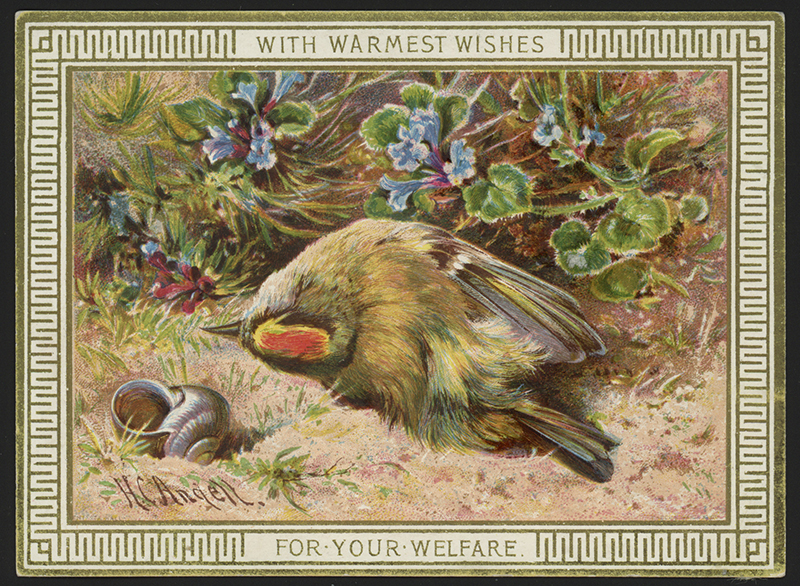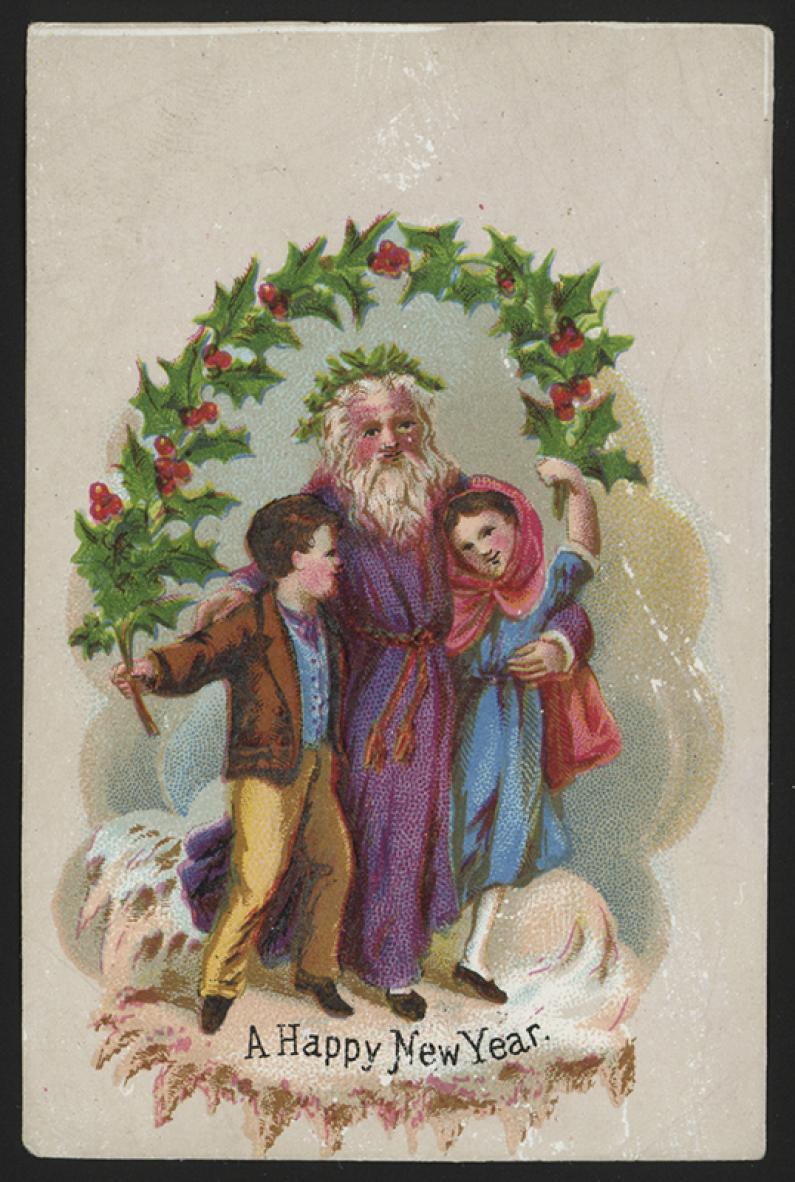From lifeless creatures to walking Brussel sprouts, slim Santas to murderous pigs, Manchester Met’s collection of 19th century greetings cards showcase yesteryear’s most bizarre Christmas celebrations.
Non-festive by today’s standards, the illustrations at the Special Collections museum’s Laura Seddon Collection depict a dead cat about to be eaten by mice, angry pig threatening to kill a butcher, and a selection of deceased birds.
Including various Santa characters dressed in blue, purple and brown and complete with bare feet and uncharacteristically flat stomach, the cards offer a fascinating glimpse into an era before a portly, red-robed Father Christmas had become linked with brands.
Special Collections Museum Curator Stephanie Boydell said: “It’s fascinating to see these old illustrations, which in comparison to today’s cute Christmas cards look odd and even slightly scary!
“They were, however, designed to be humorous and meaningful, representing ancient traditions and long-held customs and beliefs. They also give us historical insights, such as the human-like fruit that weren’t in season and only available to the wealthier in society – which might explain the ironic ‘absent friends’ message.
“It’s rewarding to be able to preserve and showcase this incredibly valuable collection of greetings cards, which tell us so much about the mores and conventions of the times.”

Intended to represent prosperity and feasting, the original bearded man is probably linked to older pagan traditions involving the Norse god Odin, once a more prevalent Christmas concept than the relatively recent US-inspired Santa or the European St Nicholas.
Likewise, the butcher and the cat about to get their comeuppance are thought to be a nod to the ancient ‘Lord of Misrule’ tradition whereby a peasant was appointed to oversee Christmas revelries, which often included drunkenness and mischief.
Despite being the opposite to modern-day festive imagery, dead birds were a common theme in historic cards – both as a reminder of the fragility of life, especially for the frail and innocent in winter, and the reflection of an older Irish tradition on St Stephen’s Day (26th Dec) when robins and wrens were hunted for good luck.

The Laura Seddon collection includes the first commercially produced Christmas card, a slightly cheerier design printed in 1843 and sold for a shilling each – about a day’s worth of earnings for a labourer.
Containing over 32,000 greetings cards, the Laura Seddon Collection is one of the largest and most comprehensive sources for the study of 19th century greetings cards, and holds some of the earliest and rarest examples of commercial cards.
It is part of Manchester Met’s Special Collections museum, a resource holding over 100 collections and archives from 19th century children’s books to 20th century posters and an international collection of 4,000 decorated papers.
It is currently located at Manchester Met’s library at All Saints campus on Oxford Road and is due to be moved to the University’s new and impressive landmark library development, with building work due to start in summer next year.








